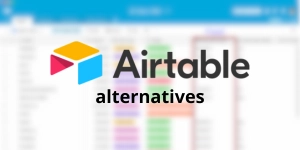In today’s hyper-connected world, digital marketing isn’t just the domain of tech startups and e-commerce giants—it’s transforming even the most traditional of fields, including the culinary arts and hospitality education. From aspiring chefs curating Instagram-worthy dishes to world-renowned culinary institutes recruiting international students via targeted ad campaigns, digital marketing has become the secret ingredient for success. This guest post explores how chefs, food entrepreneurs, and culinary schools can harness SEO, content marketing, social media, and affiliate programs to boost their careers, expand their reach, and fill classrooms across the globe.
1. The Changing Landscape of Culinary Careers
Historically, a chef’s reputation was built on word of mouth, restaurant reviews, and the occasional feature in a food magazine. Today, an online presence can be far more powerful:
- Global Reach: A chef in Zurich can influence food lovers in Tokyo and Toronto through a viral TikTok video.
- Direct Engagement: Social platforms let chefs interact one-on-one with their audience—answering recipe questions or taking feedback in real time.
- Diversified Income Streams: Beyond salaries and restaurant tips, chefs can earn from online classes, sponsored content, affiliate links, and branded merchandise.
This shift means culinary professionals must wear two hats: that of a kitchen maestro and a digital marketer.
2. Personal Branding for Chefs
Building a strong personal brand is essential in a crowded market. Here’s how culinary professionals can stand out:
- Define Your Niche
- Are you a vegan pastry chef, a molecular gastronomy expert, or a farm-to-table advocate? Identifying a unique angle helps you attract a dedicated following.
- Consistent Visual Identity
- From your logo to the color palette on your website, consistency fosters recognition. High-quality photos of dishes, behind-the-scenes kitchen shots, and well-designed graphics elevate your brand image.
- Content Calendar
- Plan regular posts: recipes on Thursdays, live Q&A on Sundays, and recipe reels on Instagram every Wednesday. Consistency keeps your audience engaged and algorithms happy.
- Storytelling
- Share anecdotes: the story behind that signature dish, your journey through culinary school, or lessons learned from a kitchen mishap. Authentic storytelling forges emotional connections.
By treating themselves as true brands, chefs can command higher fees for appearances, collaborations, and speaking engagements.
3. SEO Strategies for Culinary Businesses
Search Engine Optimization (SEO) is the backbone of any successful online strategy. Culinary businesses—from restaurants to cooking schools—can leverage SEO to appear in front of hungry audiences:
- Keyword Research: Use tools like Google’s Keyword Planner to uncover terms your audience searches for, such as “best gluten-free bakery Zürich” or “online pastry courses.”
- On-Page SEO: Optimize page titles, meta descriptions, headings, and image alt text with your target keywords. A blog post titled “5 Secrets to Perfect Soufflé” optimized for “soufflé tips” will attract more organic traffic.
- Local SEO: Claim your Google My Business listing, encourage satisfied customers to leave reviews, and ensure your NAP (Name, Address, Phone number) is consistent across directories. For culinary schools, optimizing campus location and “culinary school near me” searches is vital.
- Technical SEO: Ensure your website is mobile-friendly (many users browse recipes on their phones), has fast loading times, and uses secure HTTPS browsing.
A well-executed SEO strategy draws qualified leads—whether diners or prospective students—straight to your digital doorstep.
4. Content Marketing in the Culinary World
Content marketing goes beyond basic blogging; it’s about providing real value to your audience, positioning yourself as an authority, and nurturing trust. Key content formats include:
- Recipe Tutorials: Step-by-step guides or video walkthroughs of signature dishes.
- E-Books and Downloadables: “The Ultimate Guide to Sourdough Baking” can be offered in exchange for an email address.
- Webinars and Live Streams: Interactive cooking classes or chef interviews. These sessions not only showcase expertise but also collect live feedback and build community.
- Behind-the-Scenes Features: A day in the life of a culinary arts student or a look at how your institute sources its ingredients.
Distributing this content via blogs, YouTube, newsletters, and social platforms establishes credibility and keeps your audience returning for more.
5. Affiliate Marketing for Food Bloggers and Chefs
Affiliate marketing enables chefs and food influencers to monetize their content by recommending products and earning commissions on sales:
- Choosing the Right Partners
- Kitchen appliances, specialty ingredients, cookware brands, or online grocery services that align with your brand and audience interests.
- Transparent Disclosure
- Always disclose affiliate links to maintain trust. A simple note—“This post contains affiliate links; we earn a small commission if you purchase through them”—suffices.
- Review and Tutorial Content
- “I Tested the Top 5 Stand Mixers of 2025—Here’s Which One Reigns Supreme” merges valuable insights with purchase opportunities.
- Coupon Codes and Exclusive Deals
- Negotiate with brands for special discounts for your followers; exclusivity drives higher engagement and conversions.
By integrating affiliate marketing into recipe posts, gear roundups, and kitchen tips, chefs can turn their passion into a lucrative supplementary income stream.
6. Digital Recruitment and Student Attraction for Culinary Schools
For institutes like the Culinary Arts Academy Switzerland, recruiting top talent globally demands a savvy digital recruitment funnel:
- PPC Campaigns: Targeted Google Ads or social media ads aimed at specific demographics (e.g., “Aspiring Chefs 18–30 in Southeast Asia”).
- Landing Pages with Lead Magnets: Offer free downloadable guides—“10 Questions to Ask Before Choosing a Culinary School”—in exchange for contact information.
- Email Nurture Sequences: Automated drip campaigns that share program details, alumni success stories, campus life glimpses, and application tips, gradually guiding prospects toward enrollment deadlines.
- Virtual Open Houses: Live tours of kitchens and classrooms, coupled with interactive Q&A sessions with faculty and current students, offer an immersive preview for international applicants.
By integrating these tactics, culinary schools can maintain a constant pipeline of qualified applicants, even during off-peak recruitment seasons.
7. Case Studies: Successful Digital Campaigns in Gastronomy
Case Study A: “Farm-to-Table Challenge” by Bistro du Parc
- Overview: A small bistro in Geneva launched a social media contest encouraging followers to submit recipes using locally sourced ingredients.
- Tactics Used: Branded hashtags, weekly prize giveaways, and user-generated video content.
- Results: 12,000+ new Instagram followers in two months and a 30% increase in weekend reservations.
Case Study B: Culinary Arts Academy Virtual Reality Tour
- Overview: Switzerland’s premier culinary school developed a VR campus tour accessible via YouTube and their website.
- Tactics Used: SEO-optimized landing page, targeted Facebook and LinkedIn ads for hospitality professionals, and email blasts to inquiry list.
- Results: 45% increase in international applications within one recruitment cycle and a significant drop in physical campus visit requests, reducing costs by 20%.
These examples illustrate how creativity and data-driven decision-making can yield impressive outcomes in the culinary sphere.
8. Best Practices for Culinary Institutions and Professionals
To wrap up, here are eight actionable best practices for blending digital marketing with gastronomy and hospitality education:
- Invest in High-Quality Visuals: Food is inherently visual—professional photography and videography pay dividends.
- Leverage User-Generated Content: Encourage students, diners, and followers to tag you in their creations and share those posts on your channels.
- Monitor and Analyze Metrics: Track website traffic, social engagement, email open rates, and ad performance. Adjust strategies based on real data.
- Collaborate with Influencers: Partner with respected food bloggers or hospitality thought leaders for co-hosted events or guest posts.
- Stay Current with Algorithms: Whether it’s Google’s search ranking factors or Instagram’s feed rules, adapt your tactics to stay visible.
- Optimize for Voice Search: As smart speakers become ubiquitous, include conversational keywords like “how do I make béarnaise sauce at home?”
- Foster Community: Create private Facebook groups or Slack channels for students and alumni to share tips, job leads, and support.
- Embrace Continuous Learning: Digital marketing evolves rapidly—allocate time for ongoing training, webinars, and industry conferences.
By following these guidelines, chefs and culinary educators can maintain a competitive edge in an increasingly digital world.
The fusion of digital marketing and the culinary arts is more than a trend—it’s a paradigm shift reshaping how chefs build their brands, how food businesses attract customers, and how hospitality schools recruit the next generation of culinary talent. From crafting SEO-optimized recipe blogs to launching immersive VR campus tours, the possibilities are as limitless as the imagination of the modern chef or marketer.
Embracing these strategies not only accelerates career growth and institutional enrollment but also enriches the global gastronomic community by making exceptional cuisine and education accessible to all. Whether you’re a sous-chef aiming for Michelin stars or the dean of a prestigious culinary academy, the time to stir digital marketing into your menu is now.
Bon appétit—and happy marketing!




